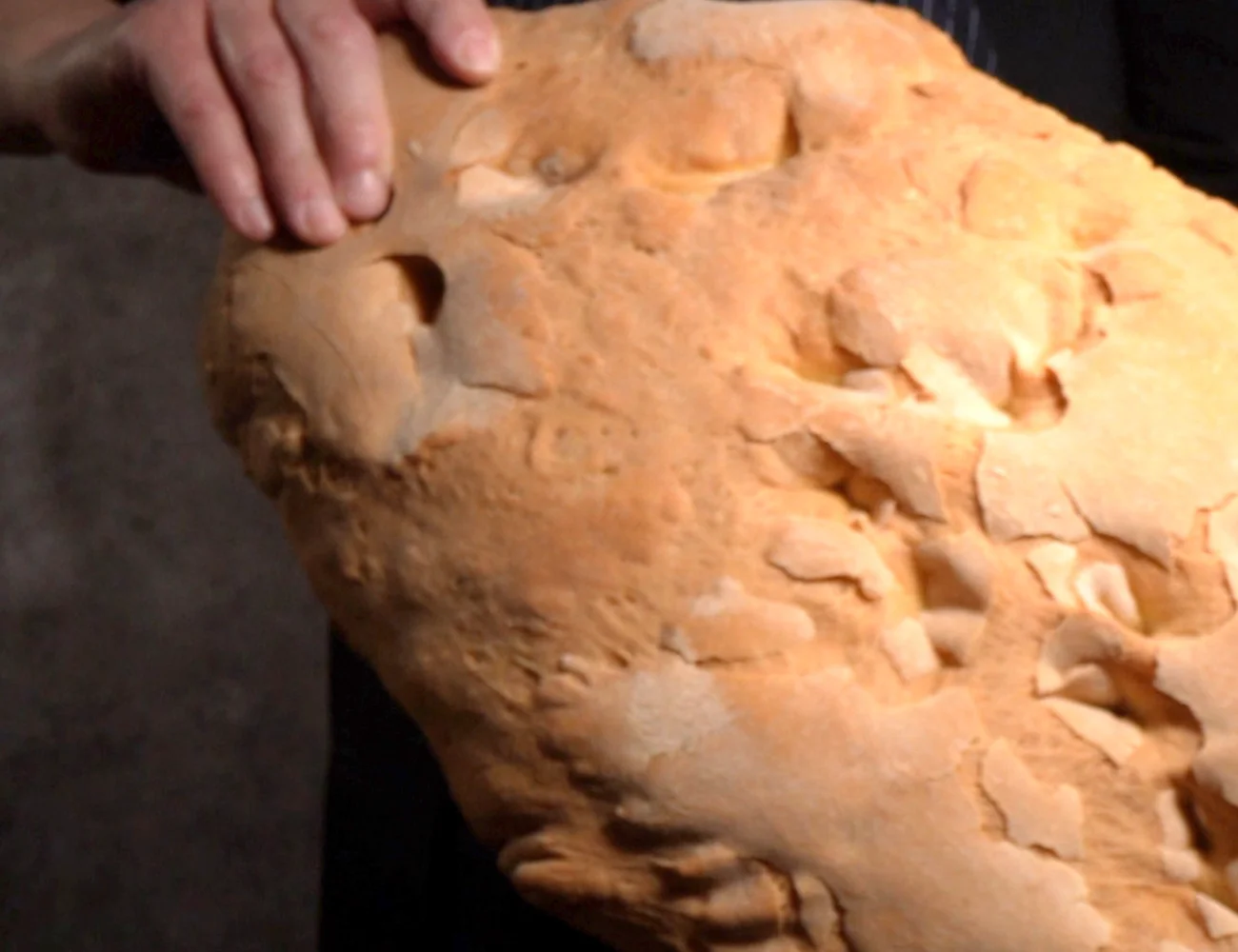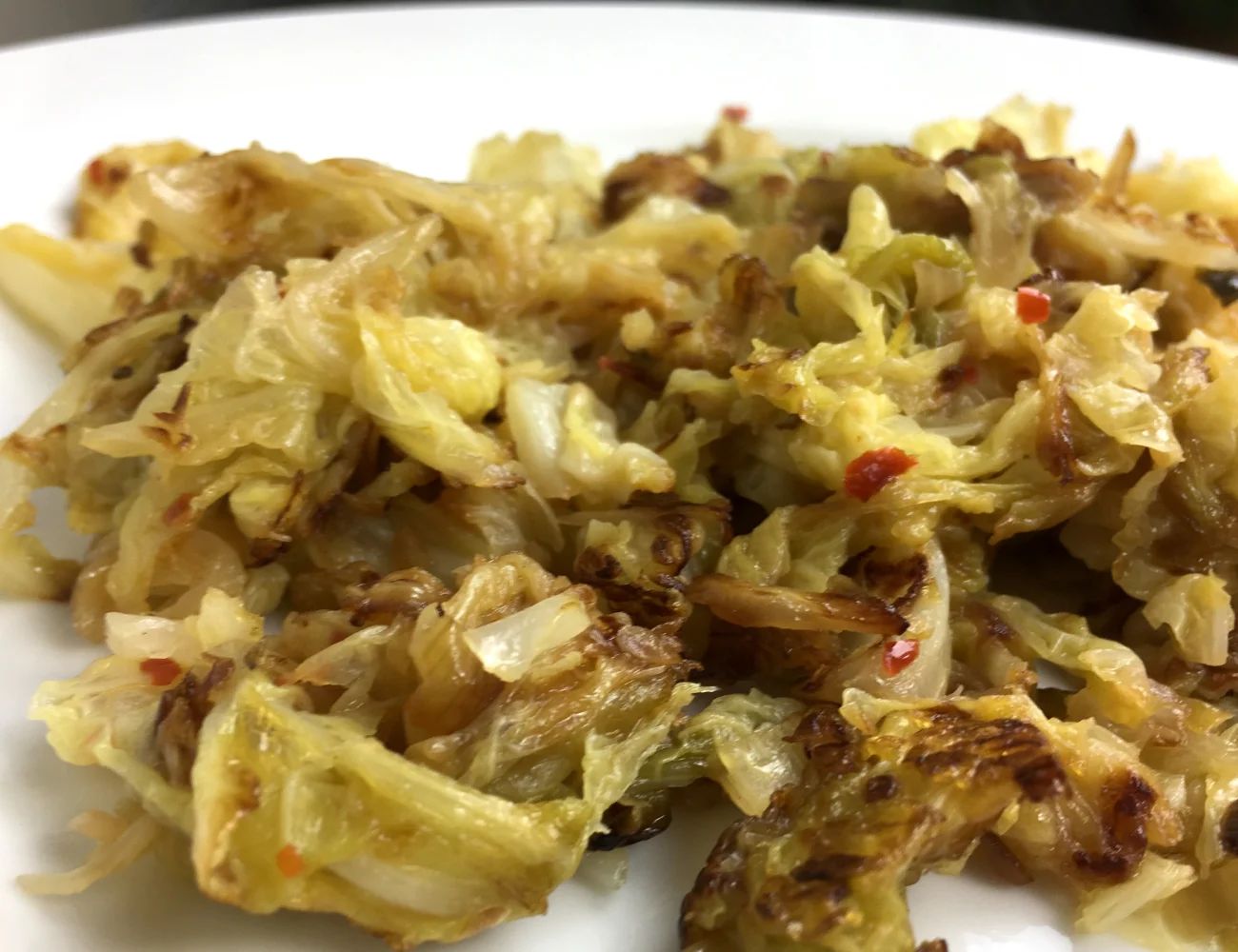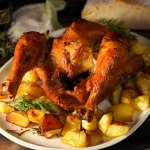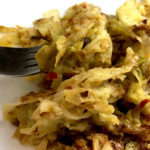Julius Caesar, as a well-off Roman citizen, likely ate well when he was in Rome. He starts his day with a breakfast, or “ientaculum,” consisting of a piece of bread, some olives, and perhaps cheese. He drinks a cup of watered-down wine to accompany his meal.

For lunch, or “prandium,” Caesar enjoys a quick, light meal, often made up of leftovers from the previous day’s dinner. This could include cold meat, bread, and fruits such as apples or grapes.

In the evening, when the work of the day has ended, Caesar partakes in the main meal known as “cena.” Cena is still the Italian word for dinner today! He savors a wide variety of foods during this meal. As a wealthy Roman, his dinner often includes multiple courses.
The first course, or “gustatio,” typically features a salad made of lettuce, eggs, and vinegar dressing. Caesar then enjoys a selection of shellfish or a type of fish sauce known as “garum.”
The main course, or “mensae primae,” frequently consists of meat. Caesar likely enjoyed dishes like roasted boar, venison, or bird. These are accompanied by various vegetable dishes, often including lentils, beans, or cabbage.

The final course, or “mensae secundae,” is a dessert course. Caesar concludes his meal with honeyed wine, fruits like dates or figs, and an assortment of nuts.
Throughout the meal, Caesar drinks more wine, always watered down as per the Roman custom.
Ok, but what did Caesar eat?
All of this represents a typical diet for a wealthy Roman in Caesar’s time, however specific details about Julius Caesar’s personal eating habits aren’t well-documented.
Yes, we do have some recorded recipes from ancient Rome, thanks to a Roman foodie named Apicius. The collection of recipes that survive from this time are compiled in a book called “Apicius,” also known as “De Re Coquinaria” (On the Subject of Cooking). This is the oldest known cookbook in existence.
While it’s important to note that this cookbook is not directly linked to Julius Caesar, it does provide insight into the kinds of meals that were cooked and enjoyed by wealthy Romans during that era. The recipes include a wide range of dishes, from simple fare to extremely elaborate meals, with ingredients like fish, fowl, various types of meat, vegetables, and a lot of herbs and spices.
One of the most famous recipes from this book is for a dish called “Patina de Apiciana,” a kind of layered casserole made with chicken, dates, honey, wine-soaked bread, and a variety of seasonings. It’s quite likely that a similar dish would have been served at a banquet that Caesar attended. Keep reading to the end of this article to see how you might make Patina de Apiciana today!
Again, it’s important to clarify that while these recipes give us a good idea of what a wealthy Roman like Caesar might have eaten, they do not provide specific information about his personal eating habits or preferences.
What was Garum?
Garum, a fermented fish sauce, was a staple of Roman cuisine. However, it’s quite different from most Western condiments used today. Its closest modern counterpart might be Southeast Asian fish sauces, such as those used in Thai and Vietnamese cooking. a clear understanding of foodborne illness, we now know that improperly fermented foods can make you very sick.
What Caesar Did Not Eat in Ancient Rome!
Italian cuisine as we know it today is quite different from what was eaten in ancient Rome during Julius Caesar’s time. Many ingredients that are now staples of Italian cooking were not introduced until after the discovery of the Americas in the late 15th century. These include:
- Tomatoes: Central to many Italian dishes, tomatoes were unknown in Europe until the 16th century when they were brought back from the New World.
- Potatoes: Like tomatoes, potatoes also come from the Americas and were not part of the Roman diet.
- Corn (Maize): Polenta, made from cornmeal, is a popular dish in Northern Italy today. However, corn is also a New World crop and was not present in ancient Rome.
- Peppers: Bell peppers, chili peppers, and other varieties were unknown in Europe until after the discovery of the Americas.
- Beans (as we know them today): While ancient Romans did eat legumes, the common beans we know today, such as kidney beans, pinto beans, and navy beans, are all New World crops.
- Squashes, including Zucchini: These are also native to the Americas.
Instead, the Roman diet was based on grains (especially wheat), olives, fruits, vegetables available at that time (like cabbage, onions, and lentils), cheese, and various types of meat and seafood. They also enjoyed a variety of herbs and spices, some of which were imported from the Eastern part of the Roman Empire and beyond. The wealthy, like Julius Caesar, would have had access to a wider range of ingredients and more elaborate meals.
Vegetables Found in Caesar’s Rome
During Julius Caesar’s time, the Romans cultivated a variety of vegetables. Some of these included:
- Cabbage: Cabbage was a very common vegetable in the Roman diet, both for the rich and the poor. It was eaten cooked and raw, and was also thought to have medicinal properties.
- Onions and Garlic: These were staple ingredients, used in many dishes for flavoring.
- Lettuce: Lettuce was a popular green, often served in the beginning of meals.
- Leeks: Romans enjoyed leeks, which were often cooked in soups or served as a side dish.
- Cucumbers: Cucumbers were commonly cultivated and eaten.
- Radishes: Radishes were another common vegetable, sometimes eaten raw as a part of the gustatio (the first course).
- Carrots: Carrots were known and used, but they were not the orange variety we know today. Ancient carrots were likely white or purple.
- Beets: Both the roots and the leaves of the beet plant were eaten.
- Asparagus: Asparagus was a delicacy in ancient Rome.
- Legumes: Various types of beans and lentils were grown and served as an important source of protein.
These vegetables would have been cooked in a variety of ways, including boiling, roasting, and stewing. They were often seasoned with herbs, vinegar, honey, and garum, a fermented fish sauce.
Want to Eat like Caesar Ate? Recipes to Try
Here are some Italian recipes on the PIATTO Recipes website that were consistent with what Caesar, as an upper class Roman, might have ate.
Rosemary Chicken (Minus the Potatoes)
Chicken and the seasonings in this recipe were all available and in use in ancient Rome! Potatoes however, were not available in Rome at this time.
Sautéed Cabbage and Onions
Cabbage and Onions were definitely available in ancient Rome!
Patina de Apiciana Recipe
Here’s an approximation of how you might make a modern version of the Patina de Apiciana mentioned in Apicius’ famous cookbook from the time! Keep in mind that this is a loose interpretation of the ancient recipe, as the original would have been quite different from our modern culinary practices.
Ingredients:
- 2 chicken breasts
- 1 cup of pitted dates
- 2 tablespoons of honey
- 1 cup of white wine
- 2 cups of crusty bread, cut into cubes
- 1 teaspoon of ground cumin
- 1 teaspoon of ground black pepper
- A pinch of salt
- 2 eggs
- Olive oil
Instructions:
- Preheat your oven to 350°F (175°C).
- In a pan, cook the chicken breasts in a bit of olive oil until they’re fully cooked. Once they’re done, set them aside to cool, then shred them into pieces.
- In the same pan, add the dates, honey, wine, cumin, and pepper. Cook this mixture on medium heat until the dates are soft and the liquid has reduced by about half.
- While the dates are cooking, place the bread cubes in a bowl and pour the date and wine mixture over them. Let the bread soak up the liquid.
- In a separate bowl, beat the eggs. Then, add the shredded chicken to the eggs and mix well.
- In a baking dish, layer the soaked bread and the chicken and egg mixture. Start with a layer of bread, then a layer of chicken, and repeat until you’ve used all of the ingredients.
- Bake the casserole in the preheated oven for about 20-30 minutes, or until the top is golden brown and the casserole is heated through.
- Let it cool slightly before serving.
This recipe might give you a sense of the flavors and ingredients that the Romans enjoyed. Feel free to adjust the ingredients and quantities to suit your tastes.
Wait, Cumin??
Yes, cumin was indeed a popular spice in ancient Rome! It was used in a variety of dishes, not only for its flavor but also for its supposed medicinal properties. Cumin, like many other spices, was a valuable commodity in the ancient world and was traded extensively throughout the Mediterranean region.
The shift away from spices like cumin in Italian cuisine likely has to do with historical and cultural changes over the centuries. During the Middle Ages, the use of spices became a status symbol in Europe, including Italy. Spices were expensive and often hard to come by, so they were used liberally by those who could afford them to display their wealth.
However, with the discovery of the New World and new trade routes in the 15th and 16th centuries, spices became more widely available and less expensive. As a result, they lost some of their status as luxury items. At the same time, there was a shift in culinary trends towards using local herbs and ingredients, which were fresher and more readily available.
In Italy, this shift led to an increased use of ingredients like garlic, onions, and herbs such as basil, oregano, and parsley, which are now staples of Italian cuisine. Cumin, on the other hand, fell out of favor and is not commonly used in Italian cooking today, even though it was once popular in ancient Roman cuisine.



